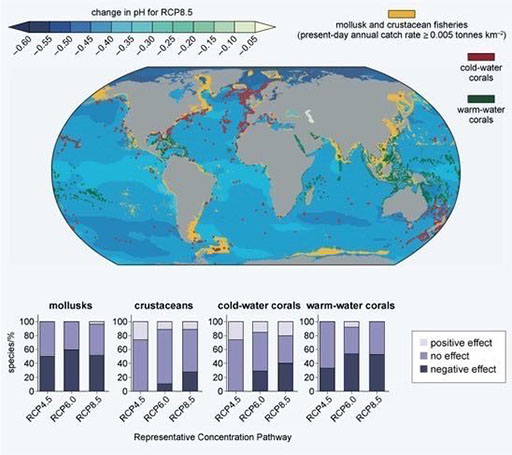4.1 Ocean acidification
One of the predicted Earth system changes is further ocean acidification. This may have different effects on different species. Those that photosynthesise – algae and seagrasses – may benefit from higher CO2, just like plants on land would. However, many species that are important to humans are thought to be vulnerable, especially for the higher forcing scenarios RCP6 and RCP8.5.
Figure 10 shows that negative effects from ocean acidification are predicted for a large number of important marine species, particularly molluscs and warm-water (reef-building) corals.

-
Which species are in regions affected by the largest predicted pH changes?
-
The largest pH changes are in the Arctic (decreases: dark blue), which has molluscs and crustaceans (yellow) and cold-water corals (red).
-
Which of those three species (molluscs, crustaceans and cold-water corals) are estimated to be more affected by pH?
-
Warm-water corals and molluscs: these have the largest estimates of negative effects (dark bars).
Why is this important? You will see later that some types of geoengineering would address ocean acidification because they tackle the root cause of climate change – greenhouse gas emissions – but others would not.
